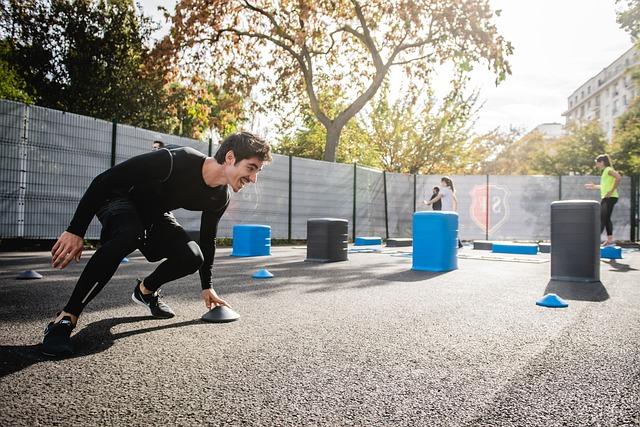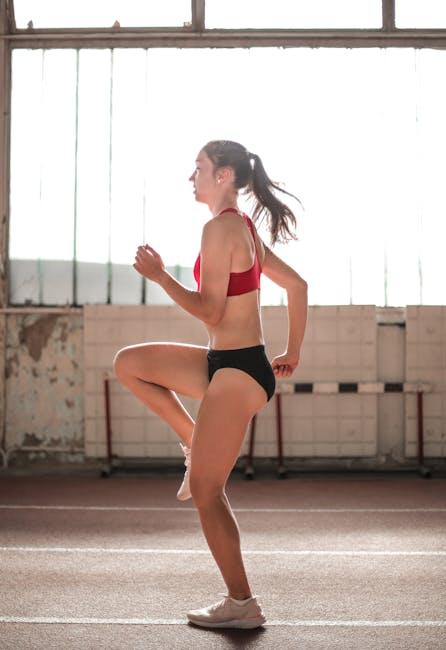Resistance bands are one of the most versatile and effective tools you can incorporate into your fitness routine. Whether you’re a beginner looking to build foundational strength or an experienced athlete aiming to enhance your workouts, resistance bands offer a portable and adaptable solution for full body conditioning. In this guide, we will explore how to harness the power of resistance bands to target every major muscle group, improve flexibility, and boost your overall fitness level. With the right techniques and exercises, you can transform any space into a personal gym and achieve impressive results. Let’s delve into the essentials of using resistance bands for full body workouts and unlock your potential for strength and endurance.
Choosing the Right Resistance Bands for Your Fitness Level
When incorporating resistance bands into your workout routine, selecting the appropriate bands for your fitness level is crucial to ensure both effectiveness and safety. Beginner users should start with lighter resistance bands, typically indicated by colors like yellow or green, to focus on mastering form and building foundational strength. As you progress, you can incorporate medium resistance bands, such as red or blue, which offer more tension and challenge your muscles further.
- Beginners: Opt for bands with lighter tension to perfect technique and avoid strain.
- Intermediate: Use medium resistance bands to enhance endurance and muscle tone.
- Advanced: Choose heavy resistance bands, often black or purple, for maximum strength gains.
Advanced users can push their limits with heavier bands, often represented by black or purple colors, to achieve maximum muscle engagement and growth. Remember, it’s not just about the color or the resistance level; consider the type of exercises you’ll perform and choose bands that accommodate a variety of movements. A set of resistance bands with different levels allows you to customize your workouts and progress as your strength improves.

Mastering Basic Resistance Band Exercises for Major Muscle Groups
Resistance bands are a versatile tool that can effectively target all major muscle groups, offering a full-body workout with minimal equipment. Whether you’re looking to enhance your strength training routine or seeking a convenient way to exercise at home, resistance bands provide an adaptable solution. To get started, focus on these key exercises:
- Squats: Step on the band with feet shoulder-width apart, holding the ends at shoulder height. Perform squats as you would normally, feeling the added resistance.
- Chest Press: Secure the band behind you at chest height, holding the ends in each hand. Push forward as if performing a bench press.
- Rows: Anchor the band at foot level, pull towards your torso with elbows close to your body to engage your back muscles.
- Bicep Curls: Stand on the band, hold the ends in each hand, and curl your arms upwards, focusing on contracting the biceps.
- Tricep Extensions: Hold the band overhead with one hand, use the other hand to pull down behind your back, extending the tricep.
Integrating these exercises into your routine can significantly enhance muscle endurance and strength. Each move can be adjusted for difficulty by changing the band’s tension or modifying your stance, making resistance bands an excellent choice for all fitness levels.

Incorporating Resistance Bands into Your Cardio Routine
Elevate your cardio workouts by seamlessly integrating resistance bands, transforming your routine into a full-body powerhouse. Resistance bands offer a versatile way to enhance your exercises, increasing both strength and endurance. Whether you’re a beginner or an experienced fitness enthusiast, these bands can add a new dimension to your cardio sessions.
- Warm-up with Dynamic Movements: Begin with band-assisted jumping jacks or high knees to engage your muscles and increase heart rate. This not only warms you up but also preps your body for more intense exercises.
- Incorporate Bands in Plyometrics: Use resistance bands during plyometric exercises like squat jumps or lateral bounds. Wrap the band around your thighs to add extra resistance, pushing your muscles to work harder and burn more calories.
- Enhance Core Workouts: Perform mountain climbers or plank jacks with a band around your ankles. This adds resistance to your core exercises, ensuring a challenging workout that targets your abs and obliques.
- Cool Down with Controlled Movements: Finish your routine with band-assisted stretches, focusing on flexibility and muscle recovery. Use the band to gently stretch your hamstrings, quads, and shoulders.
By , you not only diversify your workouts but also amplify the benefits, leading to improved strength, endurance, and overall fitness.
Advanced Resistance Band Techniques for Increased Intensity
To elevate your workouts with resistance bands, consider incorporating advanced techniques that challenge your muscles in new ways. One effective method is the reverse band setup, where you anchor the band above your exercise position. This setup provides a unique resistance curve, making exercises like squats and deadlifts more challenging at different points of the movement. It’s an excellent way to break through plateaus by varying the resistance profile, keeping your muscles guessing and engaged.
- Band Resisted Push-Ups: Loop the band around your back and hold the ends in your hands while performing push-ups. This increases the load at the top of the movement, targeting your chest and triceps more intensely.
- Assisted Pull-Ups: Secure the band under your feet or knees to provide assistance as you pull up. This technique helps you build strength until you can perform pull-ups unassisted.
- Overhead Band Squats: Stand on the band with feet shoulder-width apart, and press the band overhead as you squat. This engages your core and shoulders, adding a full-body challenge to a traditional squat.
By integrating these advanced techniques, you not only enhance the intensity of your workouts but also improve your functional strength and stability. Experiment with different band resistances and combinations to find the perfect challenge for your fitness level.




